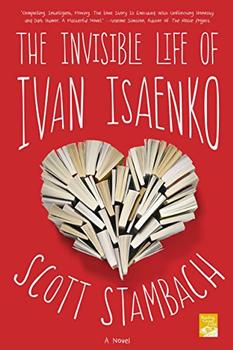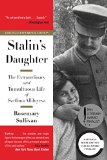Summary | Excerpt | Reviews | Beyond the book | Read-Alikes | Genres & Themes | Author Bio

Imagine the wonders of the kaleidoscope. While it is made up of many fractured, unruly and colorful segments, you can still hold it against the light, turn the wheel, and freeze one gorgeous pattern into place. These are precisely the kind of beautiful snapshots one is treated to while reading the fantastic new book by Francis Spufford, Red Plenty.
Part historical re-creation and part fiction, the novel gives us a series of colorful sketches of the USSR after Stalin's death, when millions still believed in the ideal of economic plenty promised by communism. The characters that populate Red Plenty are both imagined and real; economists, scientists, everyday factory workers, and even shady businessmen all come to life in a series of short vignettes. Characters that appear at the very beginning reappear as they grow older and come to terms with life's compromises.
Red Plenty essentially traces the underlying beliefs behind the Soviet economic principles as they unfolded in the late 50s through the 70s and how these ideals eventually collapsed. Similarities to capitalism, in fact, are quite significant, including a focus on materialism and the theory that the "ideal state" has an abundance of goods. To achieve their version of the Utopian ideal, the Soviets executed a planned economy in the extreme; everything, from the amount of food that would be made to the quantity of clothes that would be sold in stores, was regulated and calculated according to an elaborate system of quotas. As Spufford writes, the success of the dream of "Red Plenty" was a "task that required every scrap of a society's deliberate intelligence, every reserve it had of analytical subtlety, every resource it possessed of creativity." Among the "conscious arrangers" responsible for perpetuating this system, Spufford features three fictional characters: Maksim Maksimovich Mokhov, manager at a viscose production plant, Zoya Vaynshteyn, a researcher in cytology and genetics, and Chekuskin, a middleman who worked to oil the cranky machine when needed.
Meanwhile, the Nobel-prize winning economist Leonid Vitaliyevich Kantorovich, best known as one of the pioneers of linear programming, had other ideas. (Incidentally, linear programming is a statistical method that works to optimize output with a set of constraints. The focus here is on efficiency). Kantorovich suggested an economy where rewards were based, not on exceeding quotas, but on actual profitability of industries and products. But for the longest time, his views were considered too radical for most of the Soviet apparatchik, member of the Communist Party. By the time anybody actually got around to taking his ideas seriously, the Soviets had discovered oil in Siberia and shorter ways to economic success were devised.
Since the author's overarching focus is on the collapse of the Soviet planned economy, the book contains a fair amount of economic theory. The first chapter is pretty difficult to get through, but stick with it - the novel is fantastic, and Spufford's creative narrative device is a winner. None of his writing is dry or boring - Spufford couches these theories and history lessons wonderfully through his characters' stories - however there are portions that require careful reading.
Spufford's research is exhaustive, as can be seen both from the breadth of the narrative and the bibliography at the end of the book. The 50-odd pages of notes are also worth reading because they provide an added historical backdrop to the story and point out which parts of the book are real and which ones are not.
The American view of the Soviet Union has mainly been formed through the prism of the Cold War; many of us still view the USSR as the "red menace," - the root of all that was evil. In that sense, the greatest achievement of Red Plenty is that it humanizes the behemoth for us, it reminds us that no narrative is truly black or white. Without condoning any of Stalin's atrocities or subsequent ones that followed, Spufford's book shows us that the everyday people who believed in the Soviet dream did everything they could to get things right in the only ways they knew how. After all isn't working towards a better life one of the essential drivers for all of us?
In a wonderful prologue, Spufford labels the grand experiment of "Red Plenty" a skazki - a Russian fairytale. "Like a fairytale, it is wishful, irresponsible, not to be relied on," he writes. Red Plenty weaves a magical fairytale complete with colorful characters and improbable truths all bound together with the romance of hope and idealism. One can hardly think of a more accessible glimpse into the incredible kaleidoscope that was once the USSR. Red Plenty is an absolute must-read.
![]() This review
first ran in the March 14, 2012
issue of BookBrowse Recommends.
This review
first ran in the March 14, 2012
issue of BookBrowse Recommends.

If you liked Red Plenty, try these:

The Invisible Life of Ivan Isaenko
by Scott Stambach
Published 2017
The Invisible Life of Ivan Isaenko is comic and staggeringly tragic, often both in a single sentence… A grittier, Eastern European, more grown-up The Fault in Our Stars." – Eowyn Ivey, author of The Snow Child

by Rosemary Sullivan
Published 2016
A painstakingly researched, revelatory biography of Svetlana Stalin, a woman fated to live her life in the shadow of one of history's most monstrous dictators—her father, Josef Stalin.
Your guide toexceptional books
BookBrowse seeks out and recommends the best in contemporary fiction and nonfiction—books that not only engage and entertain but also deepen our understanding of ourselves and the world around us.